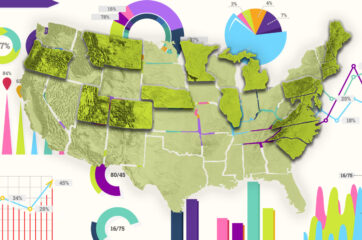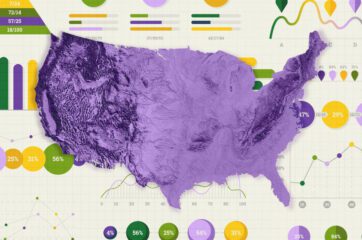This study responds to the New Mexico State Senate’s 2018 SM023, calling for a study to be done on “how a carbon fee could be implemented in New Mexico and its effects on the economy, jobs, health and greenhouse gas emissions.” The present study provides recommendations and supporting evidence for the implementation question.
We make 24 recommendations, addressing four principal facets of a carbon fee policy: which sources of greenhouse gas emissions (GHGs) should be covered; what rate the fee should start at and how it should increase over time; how should the revenues be used; and how should the system be administered.
Which sources of GHG emissions should be covered?
We recommend that fees should be placed on all fossil fuels combusted within the state, whether produced in-state or imported. Fuels exported from the state should be excluded because their emissions are the responsibility of the consuming states. Electricity generation is responsible for close to half of emissions from in-state energy use, but other policies have been proposed to address this sector. Should those other policies be passed and found adequate, electricity could be exempted from the carbon fees.
Other GHG sources should be addressed if they are significant. This includes methane leakage from the stages of the natural gas industry prior to combustion; net lifecycle emissions from combustion of biomass and biofuels; other greenhouse gases such as refrigerant chemicals; and unusually high lifecycle emissions from particular fossil fuel sources.
What should the carbon fee per ton of carbon dioxide equivalent (CO2e) be over time?
We recommend that the fee begin at $10/ton and increase by $10 each year until it reaches $50, then increase by the general rate of inflation plus 5 percent each following year. However, given the state’s target to reduce emissions 75 percent by 2050, recent scientific warnings concerning the intensifying dangers of climate change, and estimates of the social cost of carbon, higher rates would be justified.
How should the revenues be used?
We recommend that the funds generated be used to: provide rebates (or exemptions) to vulnerable households and employers; transition assistance to workers and communities in fossil fuel-related industries; incentives to expand clean energy and low-emissions transportation; and funding for resilience to climate change impacts.
Of greatest importance is protection for low and moderate income households. Based on studies done for other states, we recommend that in the range of 60 percent of funds be used for household rebates, 20 percent for assistance to employers (particularly manufacturing and agriculture), and 20 percent for clean energy and the other purposes noted above. We also recommend that higher rebates be provided for rural residents, and that public transit agencies be exempted from the fees or fully rebated for their costs.
Administrative issues
There are a number of administrative aspects that are crucial to effective and equitable functioning of the system. Carbon fees should be collected at the first point of sale or transfer within the state. For fuel produced or consumed on tribal lands, different procedures may need to be negotiated. To ensure that low-income people are protected, state agencies should be mandated to see that all such households receive their appropriate rebates. For the same reason, legislation should exempt rebates from being considered in eligibility for other state programs that provide low-income assistance.
For both households and those employers designated to receive assistance, rebates should be provided in a timely fashion. To build support for the program, rebates should be provided in a manner that is highly noticeable to recipients, while also keeping administrative costs low. Finally, the Environment Department should have general responsibility for programs to incentivize clean energy, low carbon transportation, and resilience, but could devolve administration for portions of this to other agencies with the appropriate expertise.









